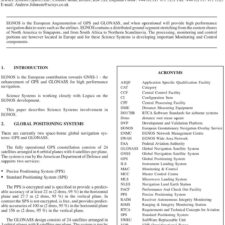Interstellar Panspermia Reconsidered
£5.00
R. Zubrin (2001), JBIS, 54, 262-269
Refcode: 2001.54.262
Abstract:
The absence of free-living microorganisms simpler than bacteria on Earth is evidence that life did not originate on Earth, but immigrated. The question then arises as to whether life was imported from a point of origin in our solar system, most likely Mars, of whether the solar system was seeded from interstellar sources. The search for fossil or extant prebacterial organisms (prebacteria) on Mars can resolve this question. However, to understand the likelihood of interstellar panspermia, we also need to consider whether the Earth itself has served as an efficient source for the spread of microorganisms. Close encounters with other stars due to random stellar motion occur with a frequency of 1/20 Myr, in fair agreement with the observed frequency of major impact events and mass extinctions. Such events are estimated to eject unsterilized material into interstellar space at a time-averaged rate of 10 tonnes per year. A number of mechanisms for the interstellar dissemination of bacteria along with this material are considered. It is shown that transmission of microbial life from one solar system to another is highly probable.





